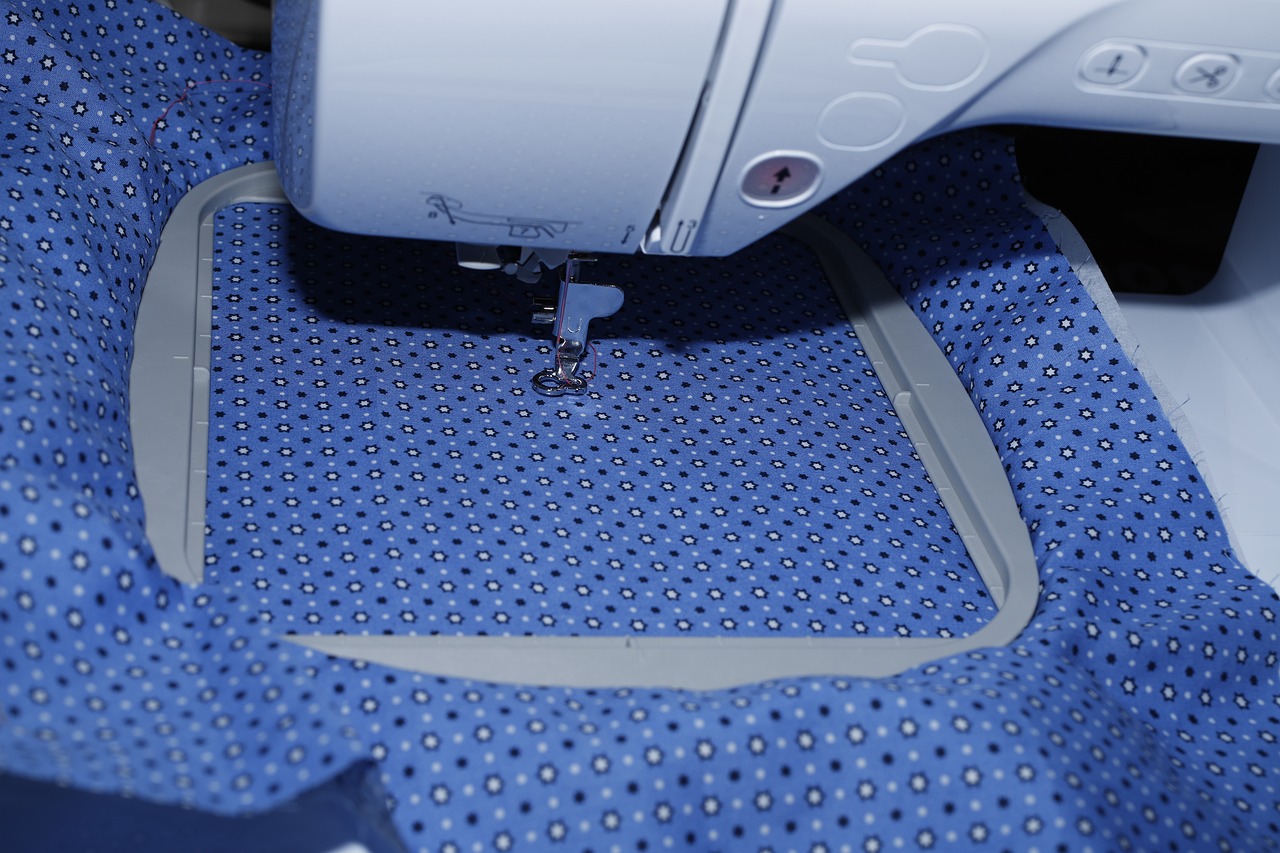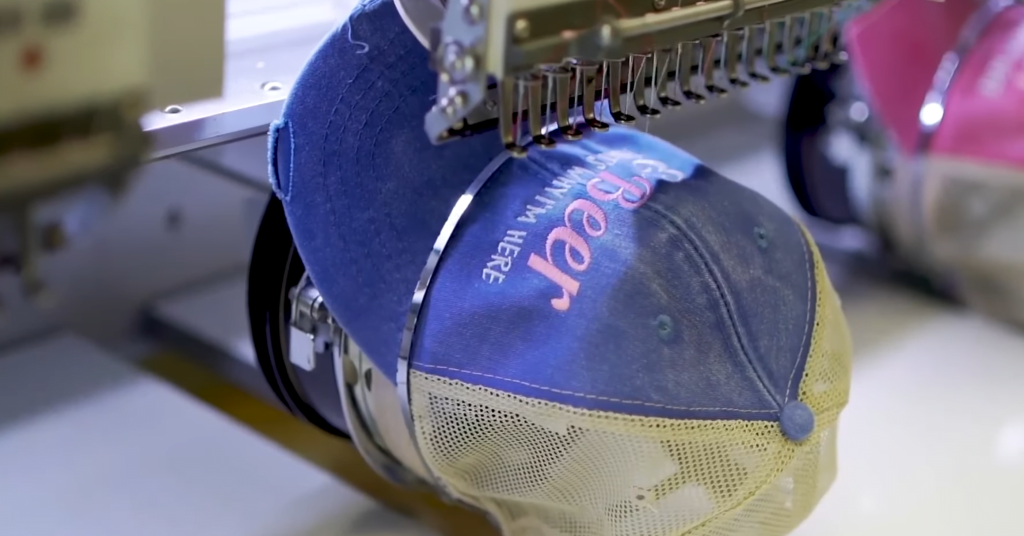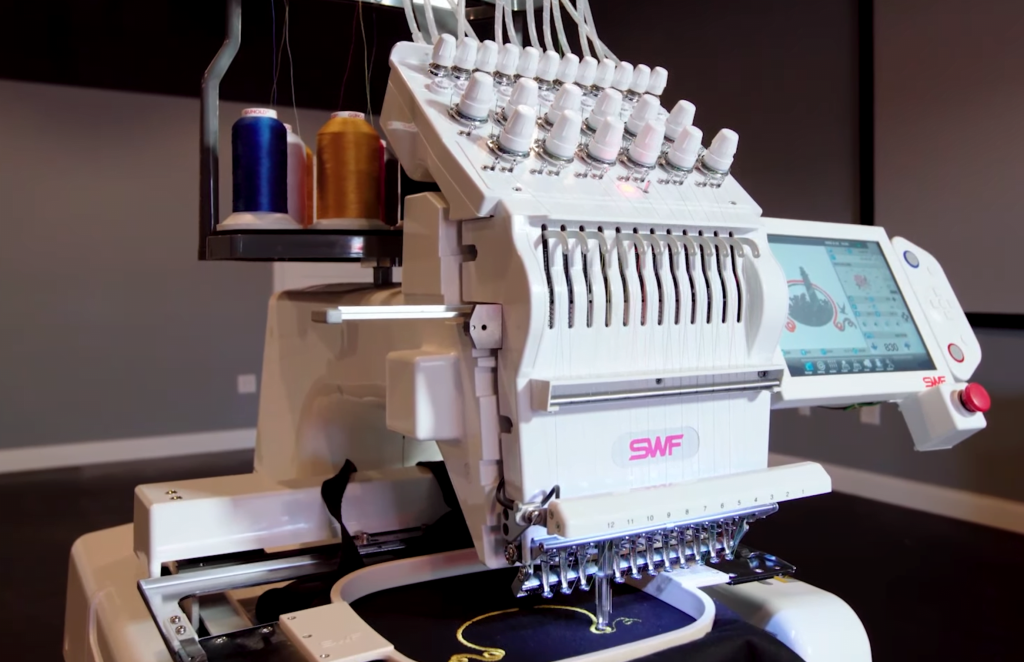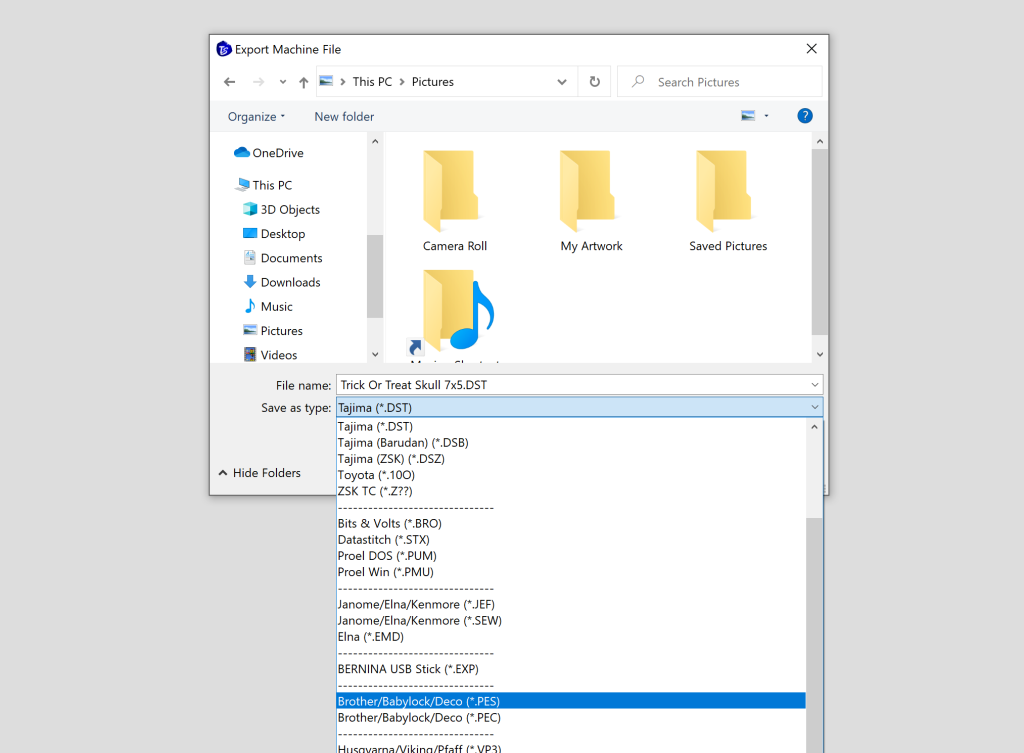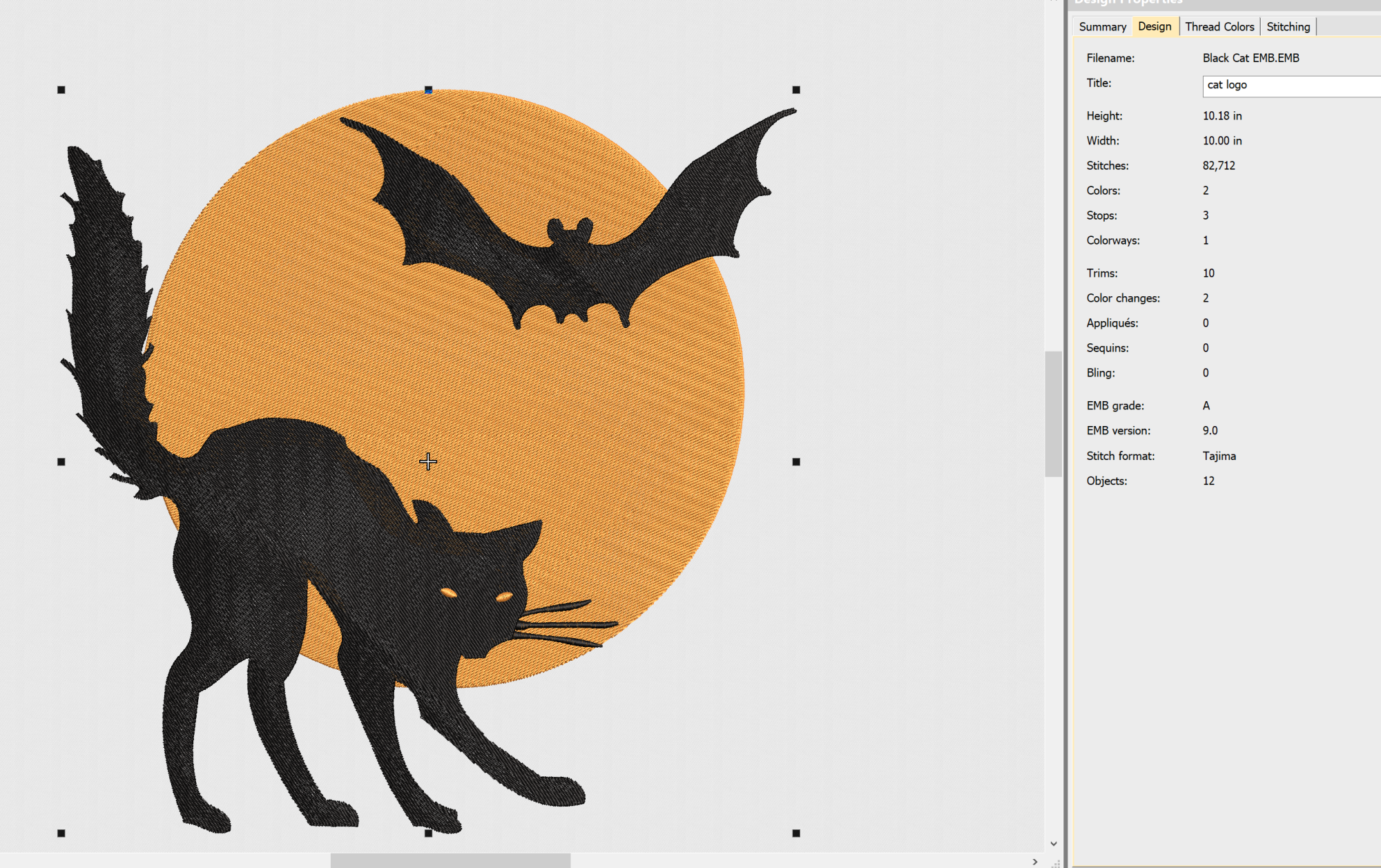Choosing the right hoop size for your machine embroidery projects and knowing how to hoop your designs properly is essential for creating a professional finished project. Unfortunately, it’s something that many machine embroidery beginners gloss over.
That’s why in this article, we’ll go over everything you need to know to start hooping like a pro. Let’s get crafting!
Types of Machine Embroidery Hoops
There are a few different types of machine embroidery hoops to be aware of, and some hoops may be more helpful for certain types of projects. For example, a magnetic hoop can be very helpful for towel embroidery designs, because it’s easier to hoop thicker fabrics with them.
Screw or Clamp Hoops
These are the traditional type of machine embroidery hoops. While they may take a bit more time to set up compared to snap hoops, screw or clamp hoops offer stability and are suitable for a wide range of fabrics. They are a reliable option for those who prefer a classic hooping method.
Snap Hoops
Snap hoops are user friendly and they allow for quick and efficient hooping that’s a bit more efficient. However, Snap hoops may have slightly less stability compared to screw or clamp hoops. This can be a concern when working with heavyweight fabrics or intricate designs. They also may not be compatible with every machine.
Magnetic Hoops
As previously mentioned, magnetic hoops are great for working on projects that would be difficult to secure with a normal hoop. Towels are one example, but magnetic hoops are also great for other things like working with delicate fabrics, like leather, which could be damaged or marked by normal hoops.
They’re also very pleasant and quick to work with, so you can spend less time fumbling with screws or clamps and just get right to embroidery. This is a big time-saver if you’re running and embroidery business.
How to choose the right hoop for machine embroidery
Consider the size of your project
Selecting the right hoop size is crucial for achieving optimal embroidery results. The hoop should comfortably accommodate the dimensions of the embroidery design. Using a hoop that is too small may cause distortion, while a hoop that is too large might lead to excess fabric movement. Matching the hoop size to the project size ensures a balanced and well-executed embroidery.
Consider fabric type and thickness
Different fabrics have varying levels of thickness and texture, influencing the choice of the embroidery hoop. Delicate fabrics may require gentler hooping methods to avoid damage, while thicker fabrics benefit from sturdy and secure hoops. Matching the hoop type to the fabric characteristics ensures proper tension and minimizes the risk of puckering or distortion.
Machine Embroidery Hoop Size Chart
Need a little help? The below chart gives an overview of what size hoop you should use to hoop each design
| Design Size | Recommended Hoop Size (in) | Recommended Hoop Size (mm) |
|---|---|---|
| 2″ x 2″ (Small) | 4″ x 4″ or smaller | 100mm x 100mm or smaller |
| 4″ x 4″ (Medium) | 5″ x 7″ | 130mm x 180mm |
| 5″ x 7″ (Large) | 6″ x 10″ | 160mm x 260mm |
| 6″ x 10″ (Extra-Large) | 8″ x 12″ | 300mm x 200mm |
How to Hoop Like a Pro
Ensure Proper Fabric Tension
When hooping, ensure that the fabric is taut but not overly stretched. Proper tension prevents puckering and distortion, contributing to the overall quality of the finished embroidery. Adjust the hoop tightness according to the fabric type to maintain consistency.
Center Your Design Properly
Utilize the built-in guidelines on the hoop or mark the center of the fabric to assist in positioning the design accurately. Centering ensures symmetry and prevents the design from being off-center or skewed during the embroidery process.
Secure Your Stabilizer
When hooping, ensure that the stabilizer is properly secured along with the fabric. Improperly hooped stabilizer can lead to shifting or misalignment, impacting the stability of the embroidery. Use techniques such as basting or adhesive sprays to secure stabilizer effectively.
Troubleshooting Hooping Issues
Below you’ll find some of those most frequent issues that people who are new to machine embroidery run into when it comes to hooping, but we also have a full machine embroidery troubleshooting guide here.
Fabric Slippage
Issue: Fabric slipping within the hoop during embroidery.
Troubleshooting:
- Ensure the fabric is taut but not excessively stretched when hooping.
- Consider using a stabilizer to improve fabric grip.
- Check that the hoop is securely fastened to prevent movement.
Puckering or Distortion
Issue: Puckering or distortion of the fabric around the embroidered design.
Troubleshooting:
- Adjust the tension on the hoop to achieve proper fabric tension.
- Use a stabilizer appropriate for the fabric type to prevent distortion.
- Consider choosing a hoop size that matches the design dimensions.
Off-Center Designs
Issue: Embroidery design appearing off-center or skewed.
Troubleshooting:
- Double-check the centering of the design within the hoop before stitching.
- Use built-in guidelines on the hoop or mark the fabric center for accuracy.
- Ensure the fabric is evenly positioned within the hoop.
Difficulty Hooping Delicate Fabrics
Issue: Challenges in hooping delicate or lightweight fabrics.
Troubleshooting:
- Use gentler hooping techniques, such as snap hoops or magnetic hoops.
- Consider using additional stabilizer to support delicate fabrics.
- Practice hooping with scrap fabric before working on the actual project.
Thread Breakage or Snags
Issue: Thread breakage or snags during embroidery.
Troubleshooting:
- Check for burrs or rough spots on the hoop that may be causing snags.
- Ensure the thread path is free of obstructions.
- Use a hoop with smooth edges and surfaces to reduce the risk of thread issues.
Inconsistent Tension Across Fabric
Issue: Uneven tension across the hooped fabric.
Troubleshooting:
- Re-hoop the fabric, making sure the tension is uniform.
- Adjust the hoop tightness to achieve consistent tension.
- Consider using stabilizer to enhance fabric stability.
Hoop Marks on Fabric
Issue: Impressions or marks left on the fabric by the hoop.
Troubleshooting:
- Reduce the hoop tightness to minimize pressure on the fabric.
- Use a backing material or additional stabilizer to cushion the fabric.
- Experiment with alternative hooping techniques to avoid marks.
Difficulty Releasing Fabric from Hoop
Issue: Fabric sticking to the hoop after embroidery.
Troubleshooting:
- Gently loosen the hoop and release the fabric without pulling.
- Use a non-stick or tear-away stabilizer to facilitate easy fabric removal.
- Avoid over-tightening the hoop during the hooping process.

Barb, our resident quilter and embroidery aficionado, weaves a thread of creativity through our collection. Serving as the curator of machine embroidery content, Barb infuses each design with a touch of her artistic expertise. The free embroidery patterns you discover on our site often bear the mark of Barb’s craftsmanship. Let’s get crafting!
